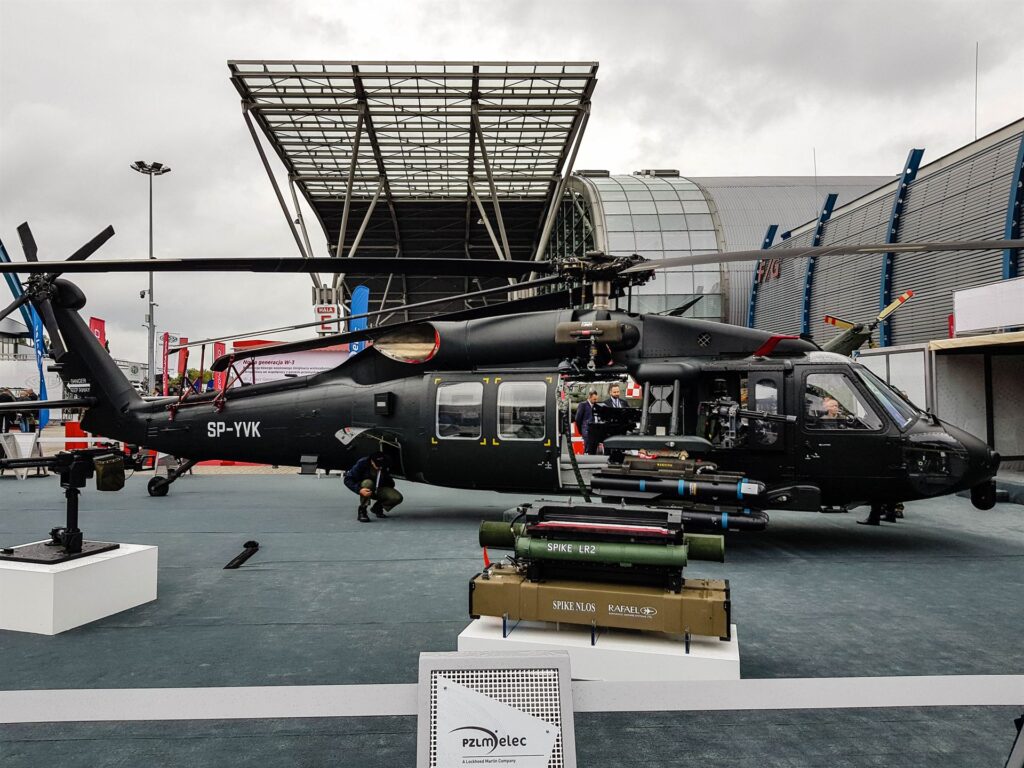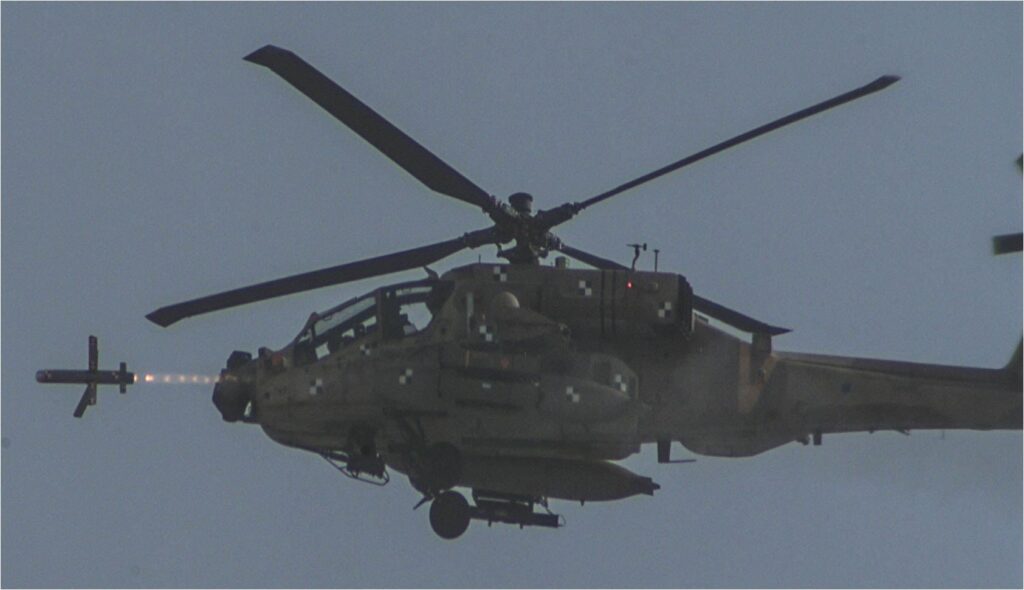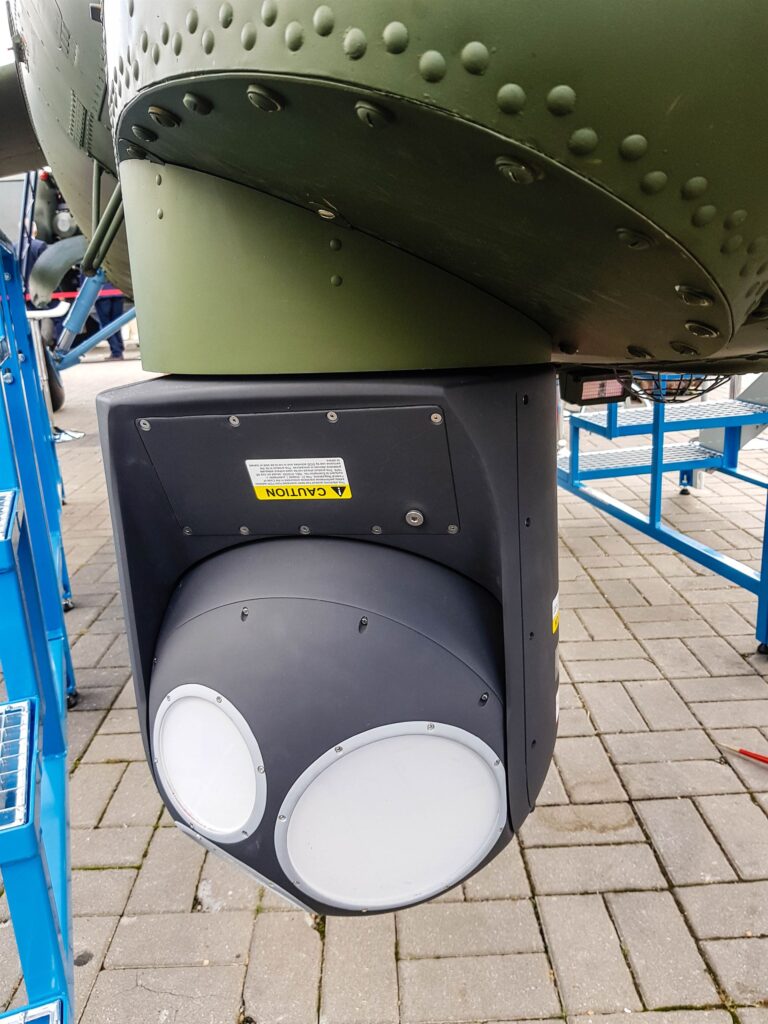Poland is in the midst of developing new anti-tank capabilities. In regards to the use of rotary-wing platforms this refers to the planned procurement of a series of modern attack helicopters under the ongoing Kruk programme, as well as modernization of currently operated Mi-24 D/W helicopters, which is considered to the an interim solution. Rafael is perceived as a possible industry partner of the Polish MoD in regards to both these projects. What would be your company’s response to the requirement of upgrading of obsolete Mi-24s by equipping them with new anti-tank weapon systems (Spike LR2 missile etc.) and auxiliary equipment, such as observation, navigation and/or fire control systems?
– Thank you for this question, first off I would like to say that Rafael is committed to supporting the 34 Spike User nations during these challenging times of the COVID-19. We are in contact with all of our users and are trying to support any requirement. As you are aware, the Spike missile family is in service all around the world in multiple nations, including 19 NATO/EU user nations.
Regarding your question, for the last few years Rafael has been in deep technical dialogue with different partners in Poland, including signing of a memorandum of understandings (MOU) for cooperation regarding the upgrade of the Mi-24 Squadrons, as was presented in the last MSPO exhibition. In this effort, in addition to Rafael, multiple Polish stakeholders are involved, with PGZ in the lead, such as Mesko, which will naturally be involved in production of the 5th generation Spike ER2 missiles, and WZL & ITWL, which will naturally be involved in the integration process.
Rafael’s legacy in helicopter integration will allow to upgrade the Mi-24 both in lethality, with the 5th generation Spike ER2 missiles (with their 16km range) but also in survivability with the advanced Toplite EOS in its latest advanced version (with commonality in maintenance to the existing Toplite EOS, already operational in Poland, mounted on the Sokol helicopter fleet). Recently Rafael even signed a MoU with PCO for transfer of technology and common production of the Toplite EOS for the Mi-24 upgrade program. This cooperation will enhance the industrial base of this program and we’re sure will benefit additional programs in which we can offer our advanced EOS.
Regarding your comment of the Mi-24 upgrade as an interim solution, the advantage with this interim solution of the Mi-24 upgrade is mainly in the short integration time, allowing initial operational capability within around a year. If the future Kruk program does materialize the armed Mi-24s will for sure be still relevant as armed rotary assets.
Regarding the Kruk program, Rafael has integrated the Spike missile to multiple different types of modern attack helicopters and is in contact with all helicopter OEMs for multiple international programs. We will be happy to support any OEM chosen by the Polish MoD with our lethality package, allowing both tactical capabilities as well as an extensive industrial package, creating work for multiple Polish vendors, as was already proven in similar programs such as the Spike LR program for the Army.
Would Rafael be able to integrate its anti-tank missile systems with the future Polish attack helicopters, such as the AH-64E Guardian and AH-1Z Viper, which are considered as one of most possible platforms of choice?
As was mentioned before, Rafael has vast experience in the integration of Spike missiles to attack helicopters. To date, we have integrated the Spike missiles (mainly Spike ER/ER2 & Spike NLOS) to multiple attack and utility helicopters such as the AW129 Mangusta for the Italian army aviation, the UH-60 Black Hawk for the Colombian air force, the Romanian air force Super PUMA, the Korean & Philippine AW159 Naval ASW Helicopter, the light and capable H145 and many more.
The AH-64E has already been integrated with the Spike NLOS missile as part of the evaluation by the US army aviation for long range precision missiles, allowing them to successfully engage moving targets at 32 km in pitch dark night with no line of sight, quite a demanding scenario. Rafael is also in contact with Bell regarding the AH-1Z Viper helicopter. Let me remind you that the Spike missile is integrated on Bell’s Cobra for many years.
Rafael has already left its footprint in the Polish defense industry by transferring the technology to locally manufacture selected versions of Spike anti-tank missile systems. Do you consider enhancing cooperation with your Polish partners in this regard, assuming that Poland will eventually decide to procure more of the combat proven Spike family of missiles?
Definitely, the Spike LR (Long Range) program with MESKO (of the PGZ Group) has been a huge success. Mesko, as a Polish vendor, was the prime in the manufacturing of 4th generation missiles, eventually supplying thousands of missiles and hundreds of Spike launchers to the Polish army in very high quality and on time. The Polish industry has enjoyed extensive transfer of technology and is producing today a significant percentage of the missile. We see great potential in copying this successful model to other Polish anti-tank programs, such as the Pustelnik, in which we are offering the Spike SR (Short Range) tactical shoulder-launched missile. We are in contact with PGZ and we will involve Mesko as part of the Spike SR global supply chain.
The commonality of Spike Missiles also come into play in a natural transition to the Spike LR2 5th generation missile, which is already compatible to the Polish army launchers (both grounds as well as vehicle-mounted). The production of LR2 is very similar to LR1 and the conversion of the production lines to the new generation can be done in relatively low investment. We are also looking to leverage these existing production capabilities for long range ATGMs for the Tank Destroyer program (Ottokar – Brzoza), offering the Spike ER2 in ground deployment (10 km) as well as the Spike NLOS (30km) which we believe is the most capable and mature solution offered today to the Polish army. The Spike NLOS was developed exactly for the purpose of being a tank destroyer and was the backbone of the IDF long range anti-tank deterrence for many years, deployed on mechanized platforms, ready to launch a mass of precision standoff guided EO missiles to 30 km, engaging the enemy tanks formations well before they reach the border, precisely the reference threat the Polish army is facing today.
To summarize, we truly believe that the Spike family offers multiple solutions which suit the different Polish ATGM tenders and we can tailor an overall holistic solution to all programs, together leveraging the industrial cooperation already in place for a very cost-effective program, while implementing significant advanced combat proven anti-tank capabilities into the different Polish army corps.
Looking into the future, Poland could very likely become one of the biggest operators of Rafael’s Spike family of anti-tank missile systems in the CEE. Could that in any way lead to launching in Poland of a local service and maintenance center for Spike-operators all across the region?
As we have demonstrated, we are open for any ideas of industrial cooperation. The Spike User club organized and run by NSPA (National Support & Procurement Agency) is an excellent opportunity for Spike User nations to offer support to each other. Definitely Poland as a main large user of the Spike Family with a large industrial base and high maintenance capabilities would be able to leverage this for cross-nation services.
What is the perspective of including your local (Polish) industry partners in Rafael’s global supply and service chain? What requirements would such companies/manufactures have to meet in order to become your partners in this regard?
As was mentioned before, we are already in process to involve Mesko in our GSC (Global Supply Chain) of the Spike SR (Short Range) missile. The requirements Polish vendors will have to meet are of course, like always, to have a competitive offer, to present a relevant past record and high standards of production. The Polish industries we are interacting with today meet these requirements.
During the last 15 years, as part of the existing Spike LR program, we learned that the Polish industry has an excellent industrial base and produces at a high quality and on time. We are open for dialogue and believe the proven capabilities of the Spike Family, which is operational today in 34 nations and mounted on 45 platforms (air, sea and land) with a proven record of more than 33,000 missiles already supplied, combined with the excellent industrial capabilities of the Polish defense industry, is truly a win-win set up.








Comments
Nobody has commented on this article yet.